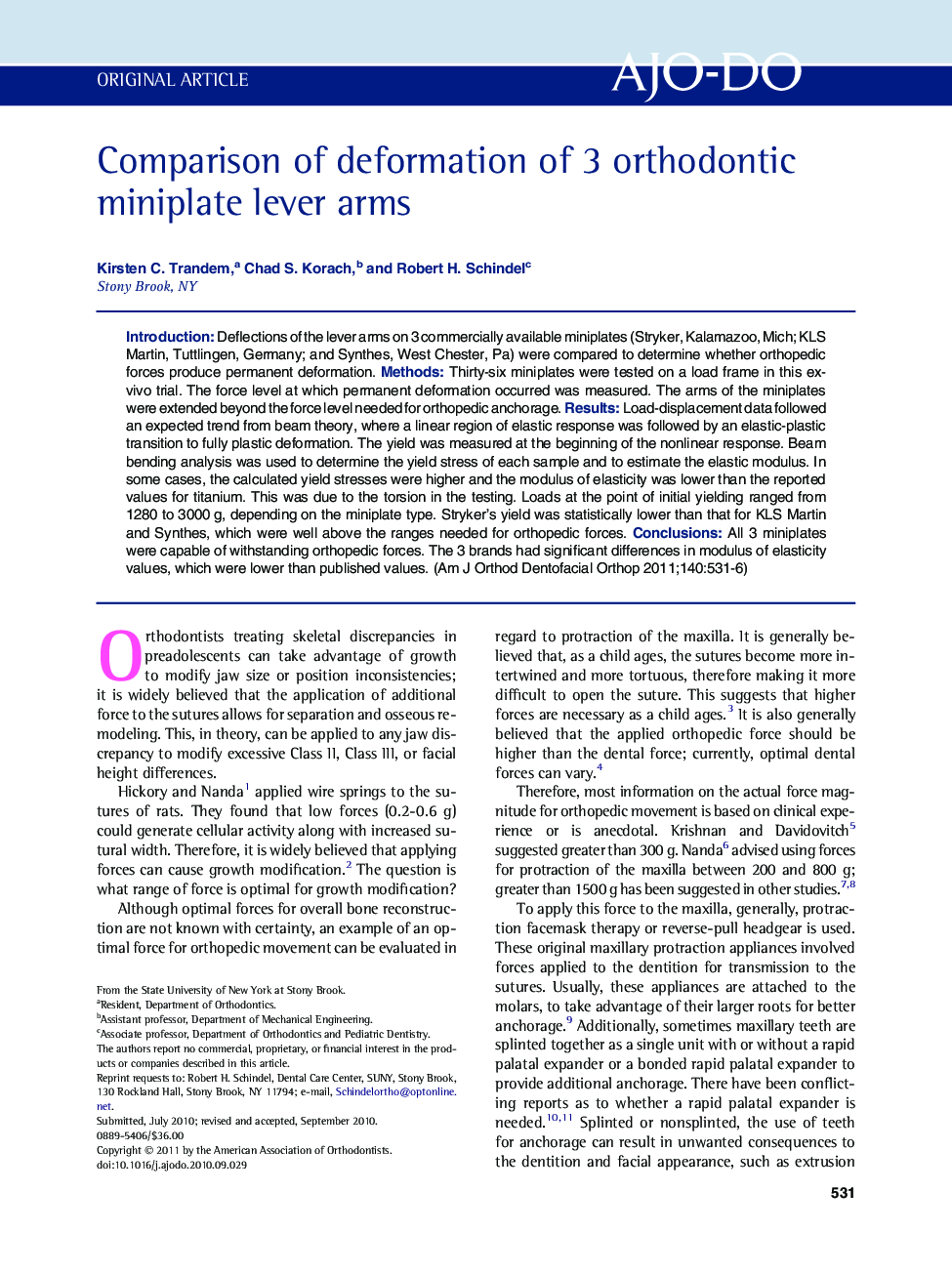| Article ID | Journal | Published Year | Pages | File Type |
|---|---|---|---|---|
| 3118201 | American Journal of Orthodontics and Dentofacial Orthopedics | 2011 | 6 Pages |
IntroductionDeflections of the lever arms on 3 commercially available miniplates (Stryker, Kalamazoo, Mich; KLS Martin, Tuttlingen, Germany; and Synthes, West Chester, Pa) were compared to determine whether orthopedic forces produce permanent deformation.MethodsThirty-six miniplates were tested on a load frame in this ex-vivo trial. The force level at which permanent deformation occurred was measured. The arms of the miniplates were extended beyond the force level needed for orthopedic anchorage.ResultsLoad-displacement data followed an expected trend from beam theory, where a linear region of elastic response was followed by an elastic-plastic transition to fully plastic deformation. The yield was measured at the beginning of the nonlinear response. Beam bending analysis was used to determine the yield stress of each sample and to estimate the elastic modulus. In some cases, the calculated yield stresses were higher and the modulus of elasticity was lower than the reported values for titanium. This was due to the torsion in the testing. Loads at the point of initial yielding ranged from 1280 to 3000 g, depending on the miniplate type. Stryker’s yield was statistically lower than that for KLS Martin and Synthes, which were well above the ranges needed for orthopedic forces.ConclusionsAll 3 miniplates were capable of withstanding orthopedic forces. The 3 brands had significant differences in modulus of elasticity values, which were lower than published values.
